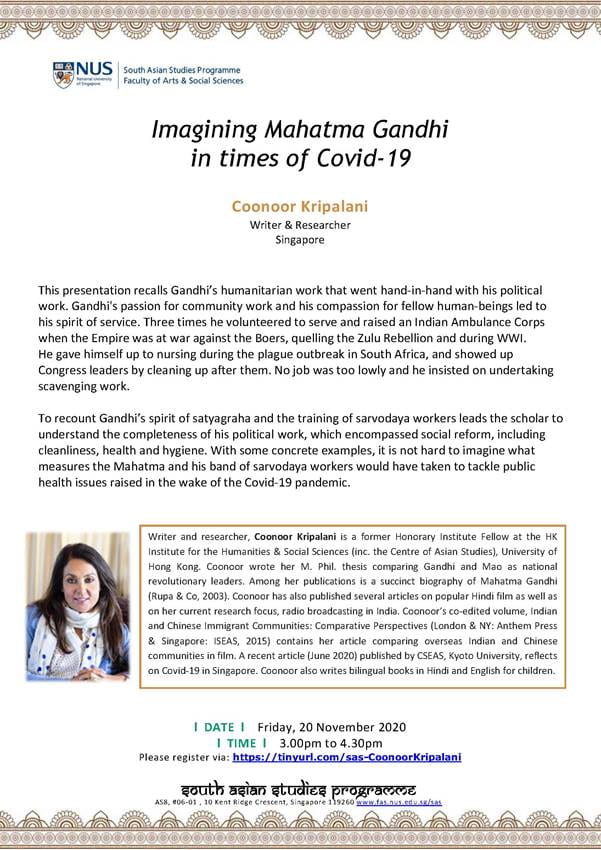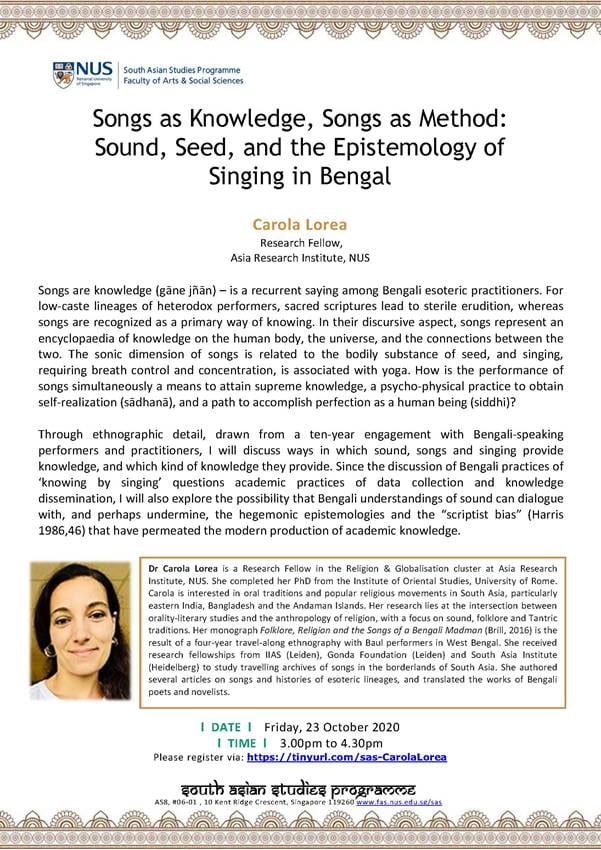Register here!
Author: saswebmaster
*NEW* MINOR IN ASIAN STUDIES (COMMENCING SEMESTER 1, AY 2020/2021)
The Minor in Asian Studies will be of interest to students across all faculties who seek to develop a critical awareness of Asia in terms of it socio-economic, political, language and cultural features and trajectories. The programme utilises an array of multidisciplinary perspectives and intellectual traditions to bring a multifaceted, inter-Asia approach to the dynamics of Asia providing students the opportunity to take courses on a variety of topics concerning Asia based in the humanities, languages, and social sciences.
This Minor will feature strong coverage to the growing connections among Asian nations, examine Asian societies’ vital institutions, and the major problems and challenges that confront them amidst unprecedented social, political, economic change with technological advancement and globalization. Through such training, students will develop a critical awareness of Asian society and culture, business histories and practices, and the historical, contemporary and the future political and economic dynamics of the vibrant region. Appreciating the value of language for students who intend to work in Asia, the Minor will also count one Asian Language module offered at the Centre for Language Studies (CLS).
For more information, check out our Minor in Asian Studies page.
JOB VACANCY: Associate Professor in South Asian History, with joint appointment in Department of History
The South Asian Studies Programme (SASP), a constituent unit of the Faculty of Arts and Social Sciences, at the National University of Singapore, invites applications for a tenured faculty position, at the Associate Professor rank, in South Asian History, to commence in 2020.
The successful candidate will have a strong research agenda focused on South Asian history, with strengths in Islamic history, statecraft, cultural and religious practices, encompassing the medieval and early modern periods and later, and must be able to frame teaching and research within the larger connected context of global and inter-Asian history. The candidate must show a proven ability to conduct research in a South Asian language. Further, a credible record of teaching introductory and advanced courses in themes such as Islam and society, gender, popular culture and art in South Asia will be advantageous. A competitive remuneration package, based on qualifications and experience, will be offered to the selected candidate.
The South Asian Studies Programme and the Department of History are two of 15 Departments within the Faculty of Arts and Social Sciences. SASP, in which the position will be anchored, was established in 1999 and is multi-disciplinary in its research and teaching (at undergraduate and graduate levels) and has a vibrant community of research students.
Application dossiers should include a CV, a list of publications, a statement of research interests and evidence of teaching experience and any other relevant information, together with a letter explaining why the position at NUS is of interest. Candidates should also arrange to send confidential letters from three academic referees directly to NUS. In addition, candidates will need to submit a Personal Data Consent Form, which can be downloaded at the link below.
Review of applications will begin on 13 January 2020 and the search shall continue until an appointment is made. Please submit documents to:
Chair, Search Committee (Joint South Asian History Position)
South Asian Studies Programme
Faculty of Arts and Social Sciences
National University of Singapore
Blk AS8 Level 6
10 Kent Ridge Crescent
Singapore 119260
or email: sassec@nus.edu.sg
Visit our website at https://www.fas.nus.edu.sg/sas/ for information on South Asian Studies Programme. The Personal Data Consent Form can be found at the following link: http://www.nus.edu.sg/careers/files/NUS-Personal-Data-Consent-for-Job-Applicants.pdf
New book traces Tamils’ presence in region
Sunday, 8 December 2019, Straits Times Online
A newly launched publication has traced the Tamil community’s presence in Singapore and South-east Asia back 2,000 years.
The Indian Heritage Centre’s (IHC) From Sojourners To Settlers – Tamils In South-east Asia And Singapore was launched yesterday by Minister for Communications and Information S. Iswaran at the Asian Civilisations Museum.
“Our early Tamil pioneers helped to shape the Singapore identity and laid the foundations of contemporary Tamil culture and practice,” said Mr Iswaran.
He also cited an observation in the book, that the Tamil community “is clearly identifiable but not easily definable” and any attempt to do so is fraught with challenges.
Published by the heritage centre and the Institute of Policy Studies, the book explores lesser-known aspects of Tamil history and heritage in Singapore and South-east Asia, examining evidence of Tamil connections with the region.
These include the inscriptions on the Singapore Stone, which some experts date back to the 10th century.
It was located at the mouth of the Singapore River, before the British destroyed it with dynamite in 1843.
Researcher Iain Sinclair, a contributor to the book, recently identified the phrase “kesariva” in the inscriptions found on parts of the artefact, and said it could be part of the word “Parakesarivarman” – a title used by several Chola dynasty kings.
This suggests a Tamil presence in the Singapore Strait dating back 1,000 years.
The publication is the first between the IHC and an academic institution, and aims to better document history and heritage. Over two volumes, it features research of scholars from India, Singapore, South-east Asia, the US and Europe.
Topics discussed include trading ports and maritime routes connecting Indian kingdoms with South-east Asia and the literary similarities between Malay and Tamil.
Mr Iswaran addressed the efforts by early Tamil pioneers in shaping Singapore’s identity and laying the foundations of contemporary Tamil culture and practice here.
“Colonial Singapore was a microcosm of India’s diverse cultural background and landscape – its vast, seemingly endless range of sub-ethnicities and linguistic groups,” he said.
Tamil Muslims set up Singapore’s first vernacular press while Indian merchants and moneylenders, including the South Indian Chettiars, were the source of credit and banking before the advent of European banks in the 19th century, he added.
“Today, Tamil is one of our four official languages, and community and state-supported efforts to promote the Tamil language and culture continue with vigour.
“Tamil Singaporeans, who constitute a majority of the Indian population in our nation, are a vibrant and diverse community, who continue to play an important role in shaping Singapore’s future,” he said.
The book launch was held in conjunction with the IHC’s latest special exhibition – From The Coromandel Coast To The Straits: Revisiting Our Tamil Heritage – which runs from Nov 23 to June 30 next year.
Admission is free for Singaporeans and permanent residents.
By Malavika Menon






